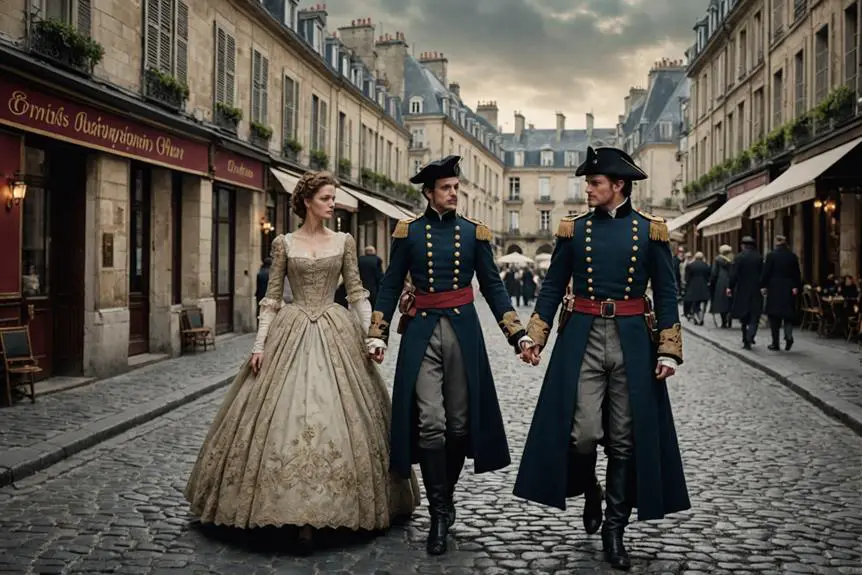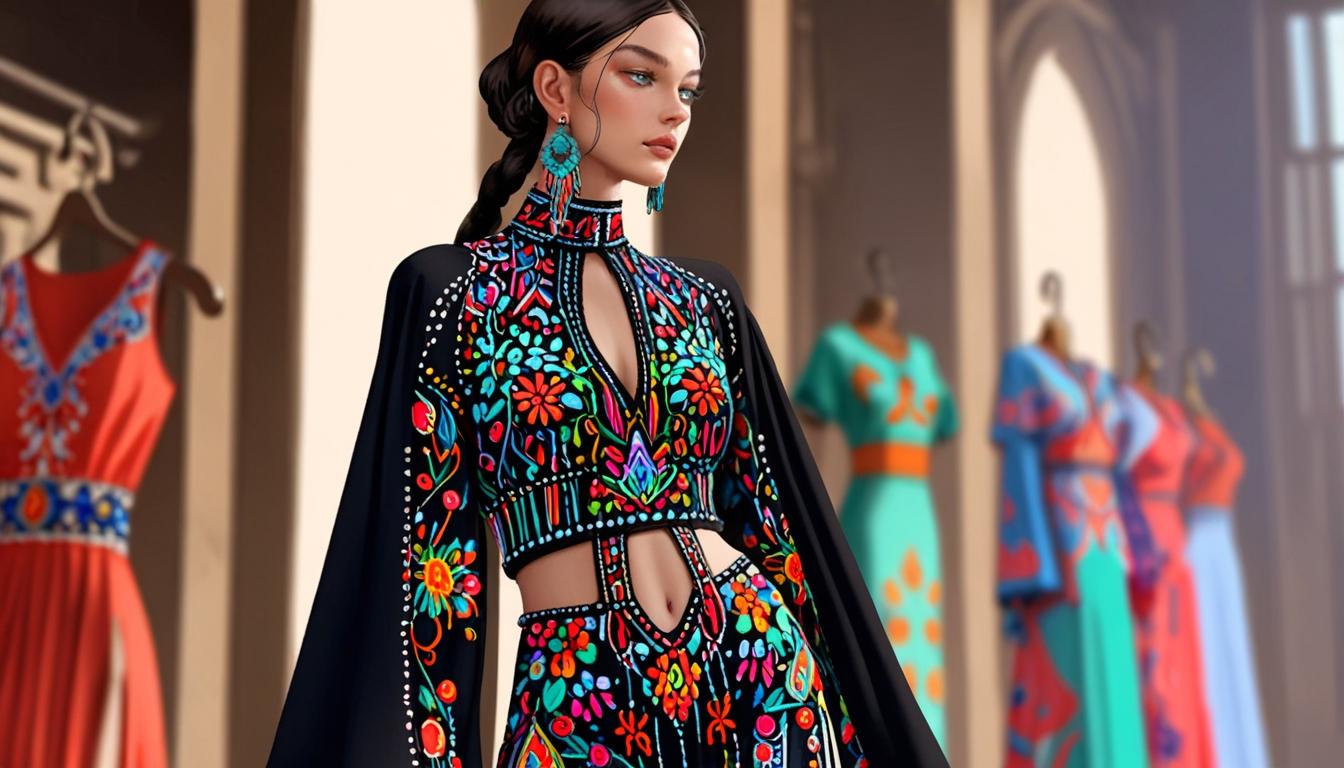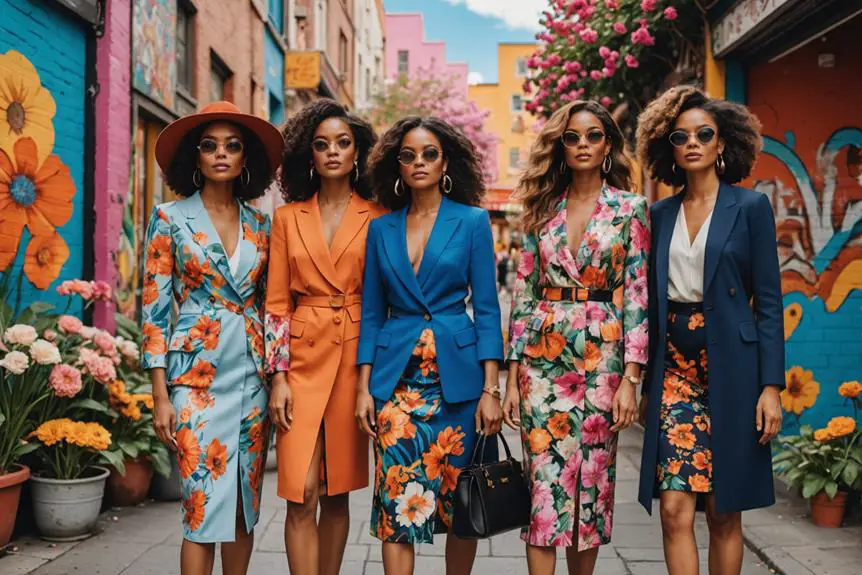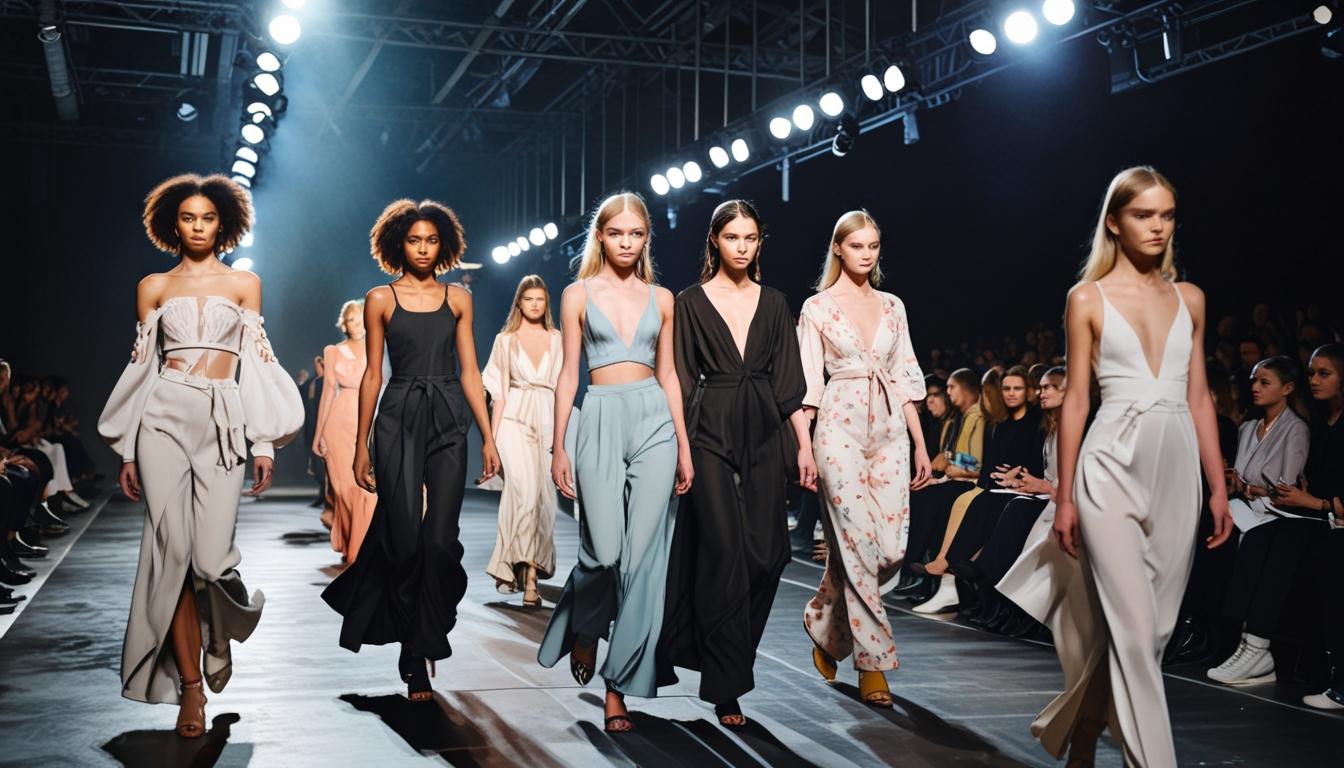When you consider the costumes, when you examine the colors, when you reflect on the fabrics in the 2012 film "Les Misérables," you uncover a rich tapestry that tells a story beyond mere aesthetics. Each outfit reveals layers of character development, with Fantine's heartbreaking transformation and Cosette's elegant evolution standing out. The thoughtful choices in clothing not only signify social status but also resonate emotionally with viewers. What do these garments really say about the characters and their journeys, and how do they influence our understanding of the film's deeper themes?
Historical Context of Fashion
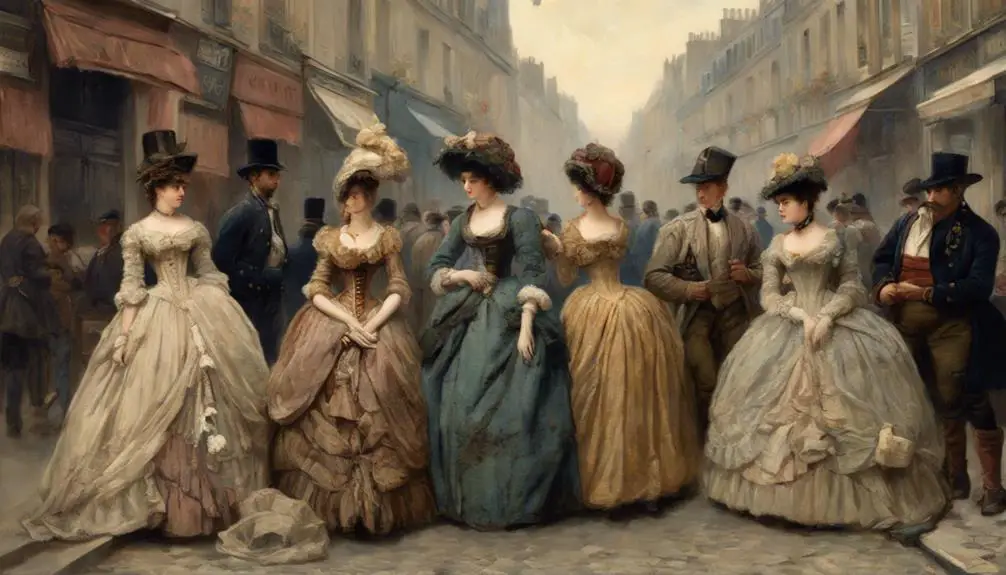
Fashion during the early 1830s in France was a vivid reflection of the era's social hierarchies and economic divides. The film *Les Misérables* captures this historical context through its carefully crafted costumes. Wealthy characters like Cosette showcase extravagant outfits that embody the opulence of the time, with fabrics that often signify quality and status, such as silk and fine cotton. You'll notice the dramatic silhouettes, large bonnets, and intricate details, all of which serve to illustrate the stark contrast between the affluent and the less fortunate. The use of accessories, such as gloves and jewelry, further enhances the depiction of social class within the film, providing insights into vintage clothing identification.
As you explore the film's portrayal of fashion, keep in mind how color plays a significant role in defining status. Light-colored gloves, for instance, were a must-have accessory for young women of means, signaling their elevated social standing. However, the film takes some creative liberties, particularly when depicting poorer characters. Their outfits and accessories sometimes lack the authenticity you'd expect, leading to a slightly skewed representation of historical accuracy.
Adult women during this period typically sported elaborate updos, a detail that the film doesn't always get right with Cosette's styling choices. Instead, young girls often wore their hair down, creating a distinct contrast that further highlights the social divides. While the costumes historically reflect the time's elegance, it is crucial to recognize the blend of accuracy and artistic interpretation present in the film. Overall, *Les Misérables* offers a fascinating glimpse into the fashion of the early 1830s, making it both visually stunning and a conversation starter about the era's societal norms.
Character Costume Highlights
The intricate costumes in *Les Misérables* not only reflect the historical context of the early 1830s but also provide deep insights into the characters' journeys. Each character's wardrobe tells a unique story, enhancing your understanding of their struggles and growth.
Fantine, for instance, begins her journey in a blue factory uniform, symbolizing her initial hope and hard work. As her life spirals into despair, her costume transforms into a striking red dress, signaling her tragic descent into prostitution and emotional turmoil. You can feel her pain through this vibrant color change, showcasing the depths of her character.
Cosette's wardrobe also evolves beautifully. Her first adult dress features traditional elements like puffed sleeves and floral patterns, which reflect her innocence and purity amid the film's darker themes. Later, her pale pink wedding gown, adorned with intricate bodice detailing, signifies her coming of age and defiance of pre-Victorian norms.
Eponine's costumes consist of a brown skirt and a green top, emphasizing her femininity while reflecting her struggles. Significantly, her transformation into a boy retains elements from her original outfit, adding depth to her character.
Significance of Color and Fabric
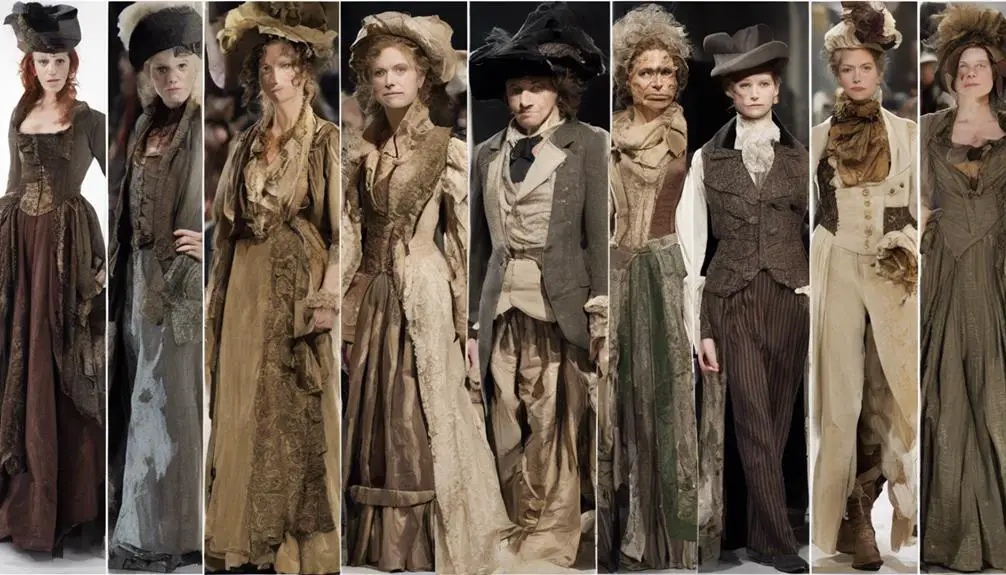
While watching *Les Misérables*, you'll notice how color and fabric choices deeply influence your perception of the characters and their emotional journeys. The costume design employs a thoughtful color palette that reflects the emotional states of the characters, with vibrant reds symbolizing revolution and passion during tumultuous scenes. Fabrics like muslin and cotton are carefully selected to represent the socio-economic status of each character, enhancing the authenticity of their portrayals in 19th-century France.
For instance, Fantine's costumes illustrate her tragic descent into despair. Her initial blue factory uniform starkly contrasts with the pink dress that highlights her uniqueness, while her final outfit in dark colors encapsulates her heartbreaking fate. Such choices are not merely aesthetic; they tell a story about her life's journey. On the other hand, Cosette's dresses, adorned with delicate floral patterns and details, like her grey rosebud dress, signify her purity and innocence even amidst the surrounding chaos.
Moreover, the use of distressed fabrics and manual distressing techniques adds an element of realism, reflecting the harsh realities faced by these characters. Each choice made in the costume design contributes to a deeper understanding of the narrative, allowing you to connect with the characters on an emotional level. As you immerse yourself in the film, you'll appreciate how these elements work together to create a vivid tapestry of human experience, making *Les Misérables* a truly compelling visual feast.
Cosette's Wardrobe Analysis
Cosette's wardrobe in the 2012 film stands out for its vibrant reflection of early 1830s fashion trends, showcasing a range of dresses that elevate her character beyond traditional stage adaptations. The costume design team beautifully captured the essence of the era, incorporating puffed sleeves and floral patterns that speak to the period's style. Her first adult dress, marked by its notable puffed sleeves, illustrates the fashion of the time, although the volume of these sleeves sparked mixed reviews. To further enhance the understanding of fashion history, it's worth noting the evolution of iconic styles over the decades, as seen in the history and evolution of brands.
One of the standout pieces in Cosette's wardrobe is the enchanting grey rosebud dress, celebrated for its intricate neckline detailing. This attention to historical accuracy not only enhances the visual appeal but also deepens your understanding of her character's development. As Cosette matures, her wedding gown emerges as a key piece, described as pale pink with exquisite bodice detailing. This gown symbolizes her shift from childhood to adulthood, contrasting sharply with her earlier, simpler outfits and showcasing her newfound elegance.
While Cosette's dresses are often praised for their beauty and craftsmanship, critiques do arise regarding her hair styling. The lack of an updo—a common hairstyle for women of her standing during that period—falls short of the expectations set by her stunning outfits. Overall, Cosette's wardrobe brilliantly reflects her journey and the film's commitment to capturing the essence of 1830s fashion.
Impact on Audience Reception
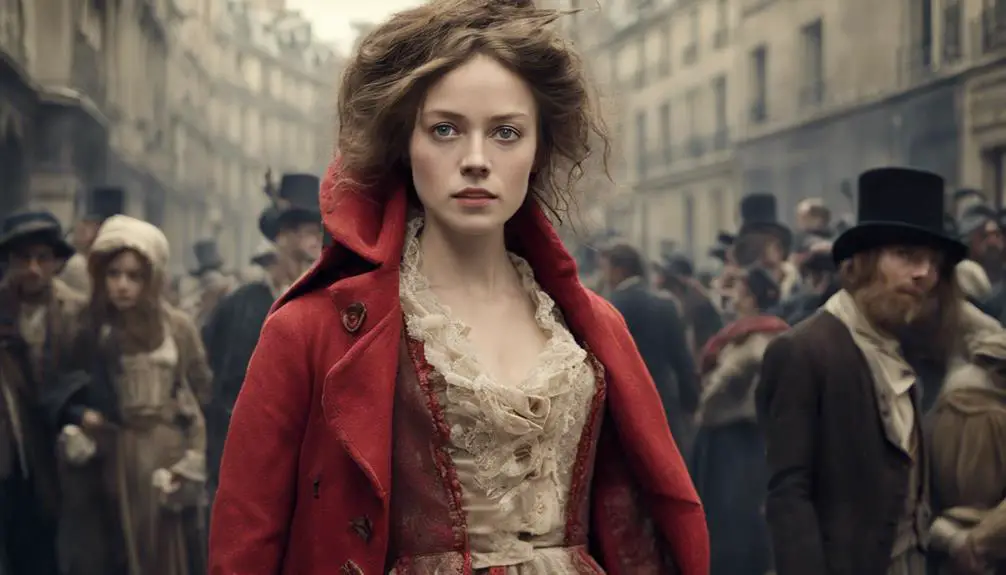
Through the lens of costume design, audience reception of "Les Misérables" is profoundly shaped, as many viewers find themselves drawn to how outfits illuminate the emotional arcs of characters like Cosette and Fantine. The costumes serve as a powerful tool for visual storytelling, allowing you to connect deeply with the characters' emotional journeys. For instance, Fantine's tattered garments vividly depict her descent into despair, while Cosette's transformation from rags to elegant attire mirrors her hope and renewal.
Audience reactions often highlight the impact of historical accuracy in the film's costume design. Many viewers express admiration for the meticulous attention to detail that brings 19th-century fashion to life, enhancing their overall engagement with the narrative. Online discussions frequently revolve around how these costumes evoke strong emotional responses, underscoring the film's themes of hope and despair. It's intriguing to see how viewers connect with specific outfits, sparking conversations about their significance within the larger story.
Even though some audience members have mixed feelings about the film's execution, the costume design stands out as a remarkable element that elevates the reception. It plays a vital role in shaping your perceptions of characters and their struggles. Ultimately, the film's costumes contribute meaningfully to its success, demonstrating how thoughtful design can enhance storytelling and deepen audience engagement. This connection between costume design and emotional resonance is what makes "Les Misérables" a enchanting experience for viewers, ensuring that the film lingers in your mind long after the credits roll.
Frequently Asked Questions
What Should I Wear to See Les Misérables?
Imagine stepping into a world of thematic attire. You'll want historical fashion—think character inspiration with color symbolism. Use layering techniques to add depth and warmth, creating an ensemble that honors the era's elegance.
Who Is the Girl on the Front Cover of Les Misérables?
The girl on the cover represents Cosette, showcasing her innocence through fashion inspiration. This character analysis highlights her emotional depth, while the cover symbolism reflects hope within historical context, portrayed beautifully by actress Amanda Seyfried.
What Song Was Written for the 2012 Movie Version of Les Misérables?
Imagine a songwriter pouring emotions into a melody. For the 2012 film, "Suddenly" emerged, reflecting deep character themes. It received Oscar nominations, showcasing the power of musical adaptations in film soundtracks and storytelling.
Where Was Les Mis 2012 Filmed?
You'll find *Les Misérables* (2012) filmed primarily in the UK. The director chose authentic filming locations, ensuring historical context. Cast experiences were enriched by these settings, enhancing production details for a vivid portrayal of 19th-century Paris.
